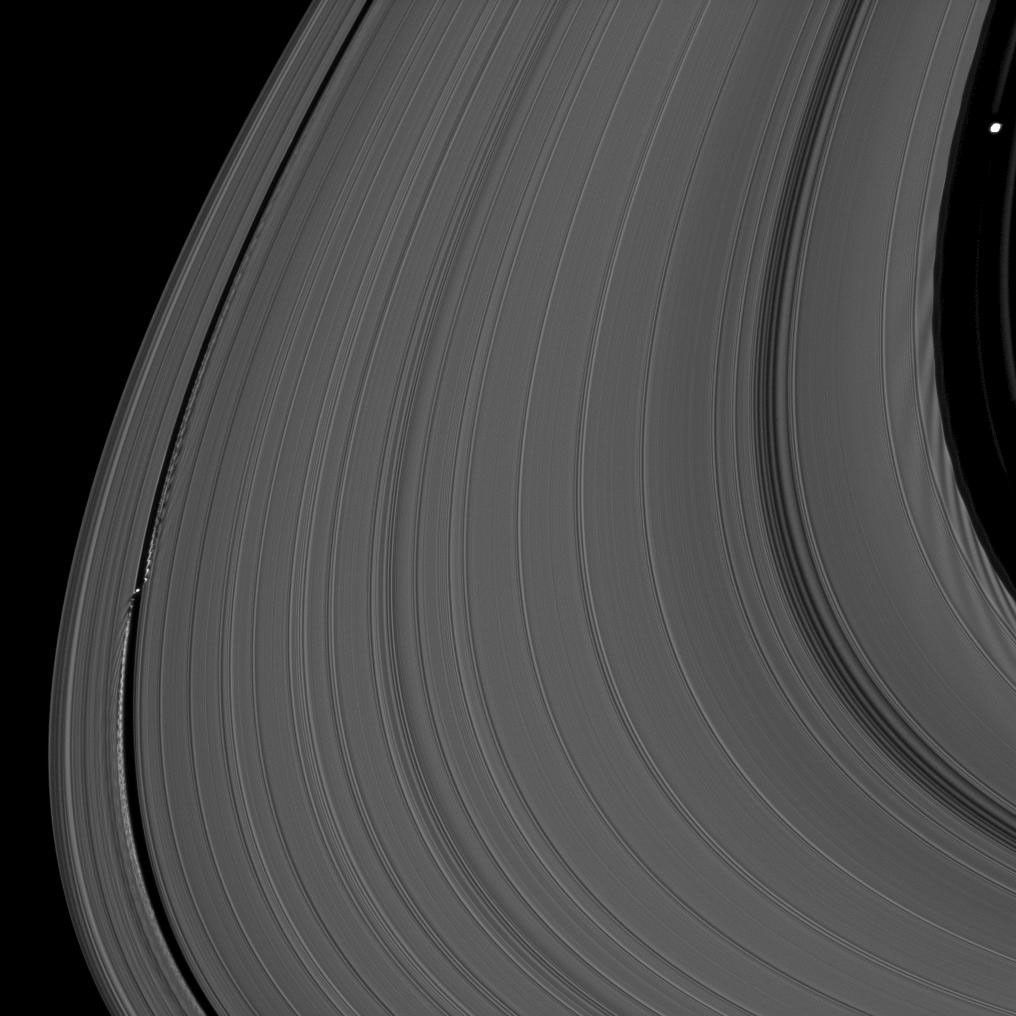Ring Moons’ Effects
| PIA Number | PIA14608 |
|---|---|
| Language |
|
Saturn's moons Daphnis and Pan demonstrate their effects on the planet's rings in this view from the Cassini spacecraft.
Daphnis (5 miles, or 8 kilometers across), on the left of the image, orbits in the Keeler Gap of the A ring. The moon's gravitational pull perturbs the orbits of the particles of the A ring forming the gap's edge and sculpts the edge into waves that move both in the ring's plane (radially) and out of the ring's plane. See Wave Shadows in Motion and Closest Daphnis to learn more.
Pan (17 miles, or 28 kilometers across), in the top right of the image, orbits in the Encke Gap of the A ring. The effects of that moon's gravity can be seen as dark wakes on the parts of the rings below Pan in the image, propagating towards the middle of the image. See Revealing Pan's Influence and Making Waves to learn more.
This view looks toward the southern, unilluminated side of the rings from about 6 degrees below the ringplane.
The image was taken in visible light with the Cassini spacecraft narrow-angle camera on June 3, 2010. The view was obtained at a distance of approximately 329,000 miles (529,000 kilometers) from Saturn. Image scale is 2 miles (3 kilometers) per pixel.
The Cassini-Huygens mission is a cooperative project of NASA, the European Space Agency and the Italian Space Agency. The Jet Propulsion Laboratory, a division of the California Institute of Technology in Pasadena, manages the mission for NASA's Science Mission Directorate in Washington. The Cassini orbiter and its two onboard cameras were designed, developed and assembled at JPL. The imaging team is based at the Space Science Institute, Boulder, Colo.
For more information about the Cassini-Huygens mission visit http://saturn.jpl.nasa.gov or http://www.nasa.gov/cassini . The Cassini imaging team homepage is at http://ciclops.org .
Credit: NASA/JPL-Caltech/Space Science Institute





























